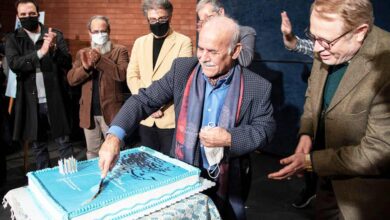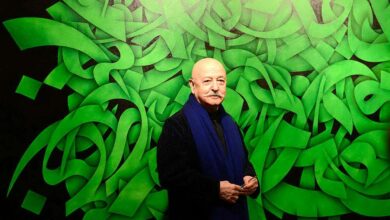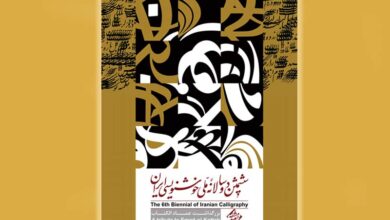The artist must present his identity in his work

Master Yadollah Kaboli, a well-known calligrapher, said: “The artist must present his identity in his work. Art is not the only issue, and a combination of knowledge and creativity is also important.”
According to the Artmag quoted by IRNA, the second virtual meeting of “Visualization” with the topic of discovering new possibilities in calligraphy was held on Sunday night (November 14) on the Instagram page of the House of Iranian Artists. In this program, Shamsuddin Moradi, a calligrapher and master of visual communication, talked with calligrapher Yadollah Kaboli and a member of Society of Iranian Calligraphists.
At the beginning of this session, Moradi asked how calligraphy can adapt to modern speed and events today.?
In response to this question, Kaboli said: “All those who work in various fields of social, political, scientific and research developments, themselves believe that the artist’s efforts are lasting.” Artists are like a multifaceted prism, every aspect of their existence is full of striving for brilliance; Whether they are thinking about creating a work of art, or when they are creating a work and thinking about a phenomenon whose result is a lasting work.
The art community, in particular and in general, is a progressive, cultured, wise generation. In their daily lives, they are constantly exploring, exploring and discovering and intuition in the world of meaning. Among the arts that all move towards a point of excellence, the art of calligraphy is perhaps beautiful due to the two elements of aesthetics and visual beauty, which is the structural geometry of the line.
He continued: The history of the emergence of human civilization began when writing was invented. Today, artists from different parts of the world participate in international festivals and conferences, and calligraphy is still a living and dynamic art, and in some countries it is considered a sacred art.
Painting is not a new art
Moradi went on to refer to the art of Calligram, and Yadollah Kaboli said: “The Calligram debate is not the talk of recent decades.” It can be said that before the Qajar and Safavid eras, there were people who did calligram work. They designed the line in an environmental way and put it in it and illustrated it. If the basis of the work of all those who do Calligram work, regardless of their direction, orientation and way of working, has an identity, that art will find charm, consistency and durability.
Unfortunately, one of the problems with the art of calligraphy is that young people entered calligraphy without going through the academic and legal path in the art of calligraphy due to the deception of the world of color.
Master Kaboli continued: “There are some painters who know colors but do not have the slightest knowledge in the geometry of calligraphy.” They work in the field of Calligram and buys their work just because they are famous in painting, but if we look at their work in terms of calligraphy components, we do not see what we should see.
He added: “Calligram masters should emphasize to their students that designs that do not have an identity can not have a special place next to the works of our masters and artists.”
A member of Society of Iranian Calligraphists stated: “We experienced in the classes that some students with artistic thinking, will and individuality are interested in doing their job while following the teacher.” We live in a time when we have to offer work beyond time, place and applications. In the evolution of calligraphy, we see, for example, when a Chalipa is written in Tabriz, one in Khorasan, one in Isfahan and Shiraz, they have principles and rules that the artist is obliged to observe everywhere, but over time, artists see the passage of We are. In all the arts, this happened with regard to the preservation of originality, and in the art of calligraphy, when we come to the time of Mirza Gholamreza Isfahani and Mir Hossein, we see the black exercises, the composition and atmosphere of which are beautiful.
On a white sheet of paper, countless points are ready for an artist to create a calligraphic work. This path requires study so that we can immerse ourselves in the world of moments and its creator.
In another part of the virtual meeting, Yadollah Kaboli stated: The artist must present his identity in his work. It is not only art but also a combination of knowledge and creativity. If we look at the past of the history of Iranian calligraphy, the reason for the emergence of different pens was that the Iranian taste did not tolerate one-sidedness and boredom, so from each line, a new line emerged. Art is art when it is accompanied by a deep look and exploration with the powers of imagination and creativity.
Kaboli said: “Can an artist who has worked very hard on the shell and carefully studied all the dimensions, proportions, delicacy and diamond cutting of words and letters, create a space and beauty with them?” That learning and attention should not hold the artist’s hands and feet.









